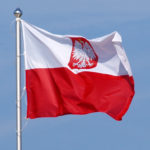
A Mexican Connection
- Post Eagle
- July 14, 2025
- Our Polonia
- 0 Comments
“In the Age of Enlightenment, when renascent Poland was deeply involved in the struggle for reform and independence, Polish reformers evinced a growing interest and sympathy for the Aztec civilization and the fight for independence waged by the Mexican Indians against the Castillian conquistadors. Paralles were drawn between Mexico and Poland.
“Mexico won its independence shortly after the fall of the Polish Commonwealth. It was then in the 19th century, that close contact was established between Mexico and Poland.”
The above quote written by Professor Tadeusz Lepkowski of the Institute of History, Polish Academy of Sciences has pointed to the fact that is the subject of this week’s column…That through the centuries, the Poles continually and eagerly offered their blood to every worthy cause — in this case, it was the plight of the heroic, yet conquered Mexican Indians of the 16th, 17th, and 18th centuries. It seems that many Poles were fairly well informed of the Spanish conquest of Mexico.
And, as Lepkowski tells us, many of these Poles decided to cast their lots with the Mexicans during the tragic 1860’s when reform, the struggle against foreign intervention, the dignity of the American people and the independence of the country were at stake. It’s very easy to identify with someone as the Poles did when one’s problems were similar.
 What happens to be very unique in this situation, however, is that despite the distance and probably little contact between Mexico and Poland, educated Mexicans also knew about Poland’s fight for independence. As a matter of fact, the City of Tampico, Mexico, contributed five thousand Francs for the Polish refugees in France after the November Uprising.
What happens to be very unique in this situation, however, is that despite the distance and probably little contact between Mexico and Poland, educated Mexicans also knew about Poland’s fight for independence. As a matter of fact, the City of Tampico, Mexico, contributed five thousand Francs for the Polish refugees in France after the November Uprising.
With this reciprocity of feeling, it is interesting to note who then were the Poles who physically expressed their bond of friendship for such a faraway nation. From America, many Poles served in the war with Mexico, among them Constantine P. Malczewski, a Polish vet of the Napoleonic Army, who emigrated to Mexico where he became a general of the artillery in the Mexican Army. Also, the very well know Jan Sobieski, veteran of the Union Army in the American Civil War. He joined the Republican Army led by Benito Juanez during the 1864-67 campaign and earned the rank of Colonel in the Mexican Army and was placed on the General’s staff.

From Poland came famous surgeon and physician Seweryn Galezowski, who emigrated to Germany after the Polish Uprising of 1830, and in 1834 went to Mexico for 14 years.
He was a doctor amongst the poor and an organizer of educational systems. Also, serving in the war was botanist Jozef Warszewicz who studied the different feral areas of the country during the 1850’s.
Of course, in considering the relationship between Mexico and Poland, we must also consider the fact that many American Poles served on the side of Texas in the 1846 war against Mexico,. Private G. Solinski was commissioned for bravery in action at Mexico City and Joseph Szulakiewicz of the U.S. Dragons was rewarded by President Polk with a “certificate of merit” for distinguished services.
As you can easily see, we Poles are ready to fight at a moments notice for what we might consider a worthy cause. But, even in Mexico, and this is a very important fact to consider, we Poles could not unite under one banner — we wound up fighting each other on foreign soil.
Here’s how it happened…It was during the Mexican War of 1862-67 — Emperor Maxmillian and his country against the independent Mexican Republic under the leadership of General Jurarez. Poles fought on both sides. An estimated 2000 officers and soldiers fought on Maxmillian’s side — among them Polish veterans of the Hungarian Revolution of 1848-49, the Polish January Insurrection of 1863-64, soldiers from the army of Garibaldi and many simple peasants. Lt. Col. Jablonski, Major Jozef Markowicki, Capt. Edward Pawlowski, and Col. Edward Subikowski are a few of the names historian Lepkowski mentions.
Only a few hundred served under Juarez. Among them the above mentioned Sobieski. Irregardless of their motives, it’s a black day when brethren Pole ends up fighting and killing brethren Pole.
So much for infamy, let me end by citing the love and cooperation Mexico has since given the Poles. It’s from the researched pen of John Hemak, a columnist from Minnesota…”When Poland was overrun by enemies, Premier Wladyslaw Sikorski came to Mexico to arrange a temporary home for displaced persons from Poland. About 600 adults and 800 children fled Poland going by way of Iran and Australia, finally made it to the Polish Home In Santa Rosa. They were welcomed and treated hospitably.
“Later, when Premier Sikorski died in a plane crash, the Mexican community held a mourning service to honor the man whom they knew and liked very well.” When the war was over, close to 500 adults and almost 250 children stayed behind in Mexico.
As a result, today Mexico does have its Polish communities in addition to a widespread appreciation of Polish music, especially the Polka. These communities may be scattered but if you’re going to Mexico for a visit or vacation, seek these people out. I imaging that you’ll be more than welcome..that is, if you’re proud to be Polish.
….See You Soon, God Be Willing….


